The post Mastering Pocket Sevens in Poker Cash Games: A Comprehensive Guide appeared first on Championnat-De-Poker.
]]>This article will explore the strategies and considerations for playing pocket sevens in cash games. By understanding the nuances of this hand, you can make informed decisions and maximize your chances of profitability.

Knowing the Strengths and Weaknesses
As mid-level pocket pairs, pocket sevens offer strengths and weaknesses that players must be aware of to make informed decisions. One of the critical strengths of pocket sevens lies in their potential for improvement on the flop, turn, or river. With multiple opportunities to catch a set or make a straight or flush, pocket sevens hold reasonable value.
However, it is essential to recognize the weaknesses associated with this hand. The primary vulnerability of pocket sevens is their susceptibility to higher pocket pairs. If an opponent holds pocket eights or higher, the chances of outdrawing them significantly decrease. In such situations, caution and careful consideration of the board’s texture and opponent’s actions are essential.
Additionally, pocket sevens face the threat of overcards. Overcards are higher-ranked cards on the board that can diminish the relative strength of pocket sevens. When faced with overcards, evaluating the potential for your opponents to have connected with the board becomes imperative, as adjusting your strategy accordingly.
Another weakness of pocket sevens is their susceptibility to coordinated board textures. If the community cards present a coordinated and potentially dangerous board, such as with straight or flush draws, the relative strength of pocket sevens diminishes. In such scenarios, carefully analyzing the board and opponents’ actions can help you determine the best move.
Pre-Flop Considerations
Position
Your position at the table is paramount when deciding how to play pocket sevens. In an early position, it is generally advisable to play cautiously, as you have little information about your opponents’ holdings. In middle or late positions, you gain more control and can consider more aggressive actions.

Table Dynamics
Observing the table dynamics is crucial before making pre-flop decisions. Factors such as the playing style of your opponents, stack sizes, and previous actions will influence your strategy. Tight players and aggressive opponents may warrant a more conservative approach, while loose and passive players may present opportunities for aggression.
Stack Size
Consider your stack size for the blinds and other players. A deep stack allows for more flexibility, whereas a short stack may require a more aggressive approach to maximize your chances of accumulating chips.
Post-Flop Strategies
Assessing the Board
After the flop, carefully evaluate the board’s texture. Analyze the presence of potential draws, overcards, or dangerous coordinated cards. If the board is favorable, with low or unconnected cards, your pocket sevens gain relative strength.
Opponent Analysis
Pay close attention to your opponent’s actions and betting patterns. Consider using your pocket sevens to apply pressure and extract value if they display weakness or uncertainty.
Conversely, if faced with significant aggression or signs of strength, exercise caution and be prepared to fold if necessary.
Bet Sizing
Effective bet sizing is essential for maximizing value and minimizing losses. Consider making continuation bets to represent strength and protect your hand against potential draws when holding pocket sevens. However, avoid overbetting the pot, which may isolate you against stronger poker hands.
Calculating Pot Odds
Understanding pot odds is critical in decision-making. If the pot odds are favorable, you can justify calling or raising, depending on the circumstances. However, folding is prudent if the pot odds are unfavorable and the likelihood of improving your hand is low.
Adapting to Changing Dynamics
Table Image
Your table image and other players’ perception of your playing style is valuable. Maintain a balanced and unpredictable approach to keep opponents guessing. It allows you to exploit their tendencies and extract more value when holding pocket sevens.
Adjusting to Opponents
Adjust your strategy based on your opponents’ tendencies as the game progresses. Against loose and aggressive players, tighten up and play more selectively. Against tight and passive players, capitalize on their reluctance to play big pots by becoming more aggressive.
Bankroll Management
Bankroll management is not just a general consideration when you play poker; it is especially vital when playing pocket sevens in cash games. Understanding the importance of proper bankroll management can help you navigate the ups and downs of your poker game and maintain longevity in your journey.
Regardless of your skill level, variance is an inherent aspect of poker. Pocket sevens, being mid-level pocket pairs, are not immune to the fluctuations and swings that come with the game. It is crucial to approach each hand and session with a long-term perspective rather than focusing solely on short-term results.

One of the critical aspects of bankroll management when playing pocket sevens is to avoid risking a significant portion of your bankroll on a single hand or session. While pocket sevens can present opportunities for potential improvement and value, poker has no guarantees. Placing too much of your bankroll at risk in a single hand can lead to severe losses and jeopardize your ability to continue playing.
By adopting a conservative approach to bankroll management, you can ensure you have the necessary funds to withstand downswings. It means carefully managing your stakes, considering your bankroll size and the potential risks.
It is generally advisable to play at stakes where the maximum buy-in is a reasonable percentage of your overall bankroll. This conservative approach acts as a safety net, mitigating the impact of variance and providing the financial stability required to weather rough patches in your game.
Conclusion
Mastering pocket sevens in cash games require skill, strategy, and adaptability to the poker tips that you have learned. By understanding their strengths and weaknesses, making informed pre-flop decisions, and employing effective post-flop strategy, you can navigate the complexities of this hand. Remember, practice and experience are vital to refining your play and becoming a formidable opponent at the poker table.
The post Mastering Pocket Sevens in Poker Cash Games: A Comprehensive Guide appeared first on Championnat-De-Poker.
]]>The post Questions to Ask Yourself Before Accepting or Applying Poker Advice appeared first on Championnat-De-Poker.
]]>
“Do I Understand the Jargon Used?”
Poker is full of jargon. It can be intimidating for new players to understand the terminology used by experienced players (and even some less experienced but still knowledgeable players). Before taking and applying poker advice, ensure you fully understand what the advice suggests. Otherwise, it could lead to bad decisions or playing against opponents who better understand the game.
If you’re getting deeper into the poker metagame and start encountering terminologies you no longer understand, it’s time to research. Look up the specific terms and know what they mean and how they apply to poker.
“Is It Based on General Poker Concepts or Specific to a Certain Variant?”
Advice in poker can be quite different depending on the variant being discussed. Knowing which nugget of wisdom applies to which game helps players understand which advice applies to them.
For example, Texas Holdem and Omaha have different strategies that work best for each variant. What works in Texas Holdem doesn’t necessarily work in Omaha, and vice versa. Make sure the advice is relevant to the game you’re playing at any given time.
At the same time, there is also lots of advice that applies to all forms of poker. This advice can provide a great starting point for anyone looking to improve their overall poker game. They’re ready to build game knowledge before delving into more specific advice.
“Does It Consider My Level of Experience?”
Advice recommended for experienced players might not be appropriate for beginners, and vice versa. Thus, consider your experience level first when deciding to take or apply the advice at the poker table. Knowing your skill level and ability can help you determine whether or not the recommendation is a good fit for you.
Additionally, some poker players may find themselves stuck at a certain level of play. It can happen to even experienced poker players if they don’t have an effective strategy for advancing their game. In this case, seeking advice from someone who has been through a similar situation can be helpful. If you’re in this situation, such advice can help guide you in the right direction and give you the tools to improve your game.

“Is It Based on Theory or Practice?”
In poker, some players rely solely on theory, others make decisions based on experience and practice, and some count on a little bit of both. Both have their merits, but it’s essential to understand that theory and practice differ.
When taking poker advice, you should consider the game’s theoretical and practical aspects. Poker game theory is essential for understanding the fundamentals of poker and developing an effective strategy. At the same time, practice is necessary to help refine your skills and develop a deeper understanding of the game.
Ideally, the advice you take should be based on a combination of theory and practice. This way, you can cover both bases and enjoy more significant chances of success.
“Is It Relevant to My Bankroll Management Strategy?”
It’s important to understand that bankroll management is essential to poker. Without proper money management, you can easily find yourself in a tough spot financially. So before taking any poker advice, consider your bankroll and how you manage it first.
For example, some strategies may require more risk than others, leading to losing a lot of money if the approach isn’t tailored to your budget. Ensure the advice is adjusted for your bankroll management plan.
“What Context Is It Coming From?”
Different contexts require different strategies when it comes to poker. For example, a strategy that works well in a tournament setting may not work well in a cash game. So, understand first the context of the advice you’re receiving so that you can adjust your poker strategy accordingly.
Additionally, make sure you trust the source from which the advice comes. Don’t take advice from someone who’s only had limited successes in the game. Doing so could lead to bad decisions and losses in the long run.
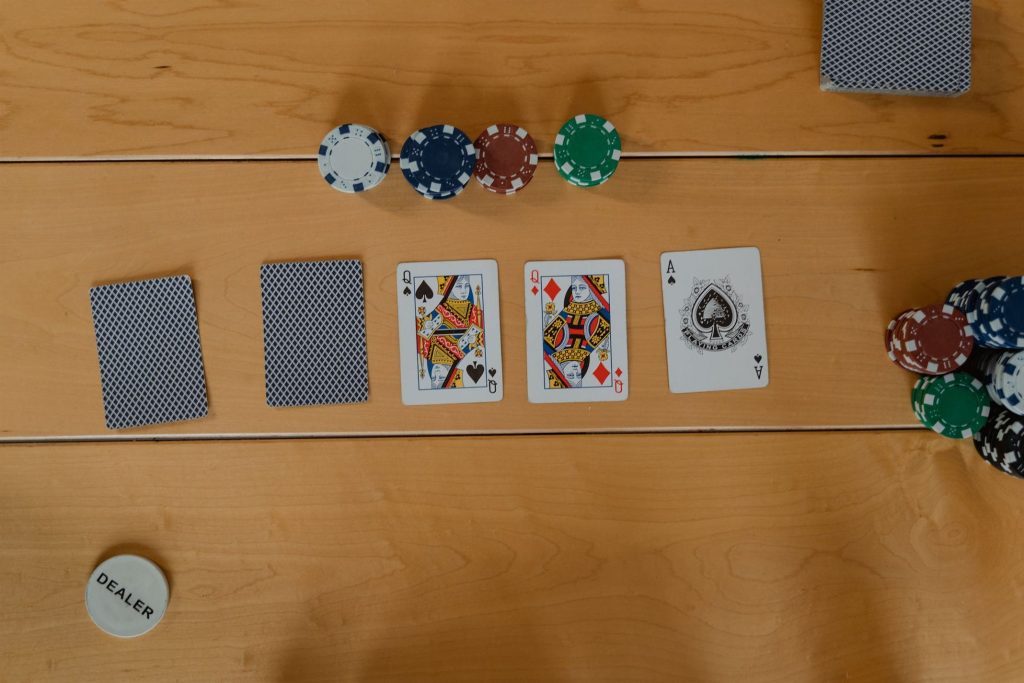
“How Old Is This Advice?”
The poker world is constantly changing. Tactics and strategies that used to be effective may no longer work due to shifts in the game’s meta and technology. As such, it’s important to make sure you’re taking the most up-to-date advice on current trends and developments. So if the advice is over a few years old, consider looking for newer sources with up-to-date information.
“Does It Match Other Advice?”
Finally, make sure the advice you receive matches up with other advice. If multiple sources give conflicting information, you must first discover why that may be the case. Consider researching different sources and seeing what strategies and tactics they recommend to make an informed decision.
On the other hand, if various sources agree on the same advice, this is a good indication that it’s sound general advice. In this case, you can have more confidence in applying the advice to your game.
Don’t Take Our Word for It!
The biggest takeaway is to take advice with a grain of salt and use your judgment when deciding which ones work. Even if someone offers you good advice, it may be wrong for you or your unique situation. Make sure that you weigh all of the options before making a decision.
Considering whether or not the advice is relevant to your bankroll management strategy, the context it’s coming from, its age, and how it compares to other advice can help you make informed decisions when taking poker advice. Good luck!
The post Questions to Ask Yourself Before Accepting or Applying Poker Advice appeared first on Championnat-De-Poker.
]]>The post Want to Improve Your Poker Strategy? Here’s a Quick Guide to Backing in Poker appeared first on Championnat-De-Poker.
]]>As a result, some of the most successful players have quickly climbed up the ranks thanks to these deals. Even though they come with significant risks for both parties involved, such partnerships often generate substantial profits in the long run. Let us delve into how exactly poker staking arrangements work

What is Staking in Poker?
Regarding early staking deals, the player receives money to partake in different games that are either their preference or suggested by their backer. It is akin to what angel investors do when they place capital into a venture with high expectations of returns.
Except for this time, instead of investing in an organization, the stakeholder is putting funds toward an individual poker player’s success and potential winnings. Formerly, these types of agreements were sealed through a handshake between two parties – professional players offering support for each other or entrepreneurs sponsoring up-and-coming stars.
In the modern online poker guide universe, trust is still necessary for deals. But now it’s a bit more sophisticated. Players sign contracts that define all terms of an agreement before playing – from timeframes and specific games to staking taxes and markups. These safeguards are integral since backers typically need to learn from each other better in advance!
With the advent of dedicated staking sites, it has become easier for individuals to find investors and get funding in poker. Despite this development, however, risks have also increased. As such, contracts are now commonplace when agreeing with a backer – allowing them to exercise more control over their “horse’s” activities at the felt.
What Happens if a Staked Player Loses?
Consider a situation in which an individual is backed with $100,000 and enters multiple tournaments. Despite spending $30,000 on tournament buy-ins, the player manages to win one for $20,000 – yet they still have a debt of $10,000 outstanding. This money owed is referred to as “makeup” and must be repaid before any share of profits.
Instead of sharing the $20,000 win with their backer, a player must pay back the entire sum. While an investor might allow them to keep some money for living expenses, they must still give up most of this profit to reimburse their makeup costs.
The makeup factor is where staking deals can be a dicey situation for both parties involved. If the player defaults on their payment, leaving an outstanding balance of $10,000, it creates a massive loss for the investor. Conversely, if the player has already lost $30k in one go during their initial staking deal – they’ll undoubtedly need help to profit from it going forward!

Types of Players You May Not Consider Backing
Frankly, there aren’t many exceptions to this rule, and players you can back profitably. However, let’s discuss some of the potential candidates.
Players who have had success with their bankroll for years but now must face an abundance of unexpected bills can be in a tricky situation. The issue here lies not in the truthfulness of what is happening.
While emergencies can arise, why were they not already equipped with the necessary funds? Not having the money makes me question their financial management skills, which backers need reassurance in when considering a business relationship.
It’s also worth noting that after an emergency occurs, there are often further expenses and complications to deal with. Because of this, some people’s policy policy has been strict: if someone appears desperate, some backers do not enter into any agreement due to their tendency for impulsive decisions and diminished ethical judgment caused by stress.
When a player is both emerging in poker, fresh with a poker guide, and an amateur in the game, it’s hard for me to trust that they will move up the stakes when taking a shot. Not only do high-stakes games usually get trickier as you go higher, but this also implies that there would be quite the learning curve along their journey – something some backers only want part of if they’re good friends.

Finally, some players have been backed for their careers because that’s what they’re most comfortable with. Typically, these individuals have won on every stake they’ve ever taken for various reasons; investors wanting to get out of backing, the player needing to move up stakes sooner than expected, or personal issues arising between them and their backers. The latter is somewhat unusual, mainly since a great relationship must be established for any type of backing agreement, and people tend to stay close when money is involved!
Cash Game Staking
You are trying to obtain funds to play higher stakes and reduce risk. Casino games and cash game staking typically do not include the usual 50/50 agreements.
For instance: you are a successful player at $5/$10 but want to attempt taking on $10/$20 for which an investor offers you a simple 50/50 split – although the stake is double that of before, half of all winnings will go straight away! In theory, this leaves no monetary gain whatsoever.
Moreover, $1/$2 games are more likely to be as tricky as ever. Therefore it doesn’t make sense for you to have a 50/50 deal with the same earning potential against experienced gamers. It’s much better to opt for a 25/75 split that works in your favor or decide on selling percentages. This way, you can manage how risky your moves will be and what rewards await – e.g., keeping 70% of all winnings after distributing 30% of the action elsewhere!
Wrap-Up
Utilizing backing in poker is a great way to maximize your potential to generate profits from the game, much more so than utilizing online poker tips yourself. While it does require an initial investment, well-backed players can play more aggressively and efficiently, increasing their chances for success.
Remember that this form of strategic approach may not be suitable for everyone, so always explore the best options and consider your long-term goals as a player before moving forward with any significant decision. With risk management firmly in place and a deep understanding of how to use backing effectively as part of a strategy, you’ll have the best chance at consistently generating profitable returns from poker games.
The post Want to Improve Your Poker Strategy? Here’s a Quick Guide to Backing in Poker appeared first on Championnat-De-Poker.
]]>The post Poker Strategy: Balancing Your Range, Explained appeared first on Championnat-De-Poker.
]]>A question often asked by poker players is, “What is the best way to play?” Truth be told, there is no objectively correct way to play poker. It depends on many things, and you often see poker pros playing differently depending on who they’re up against or their position.
Still, a good foundation for developing your strategy is understanding the four main playstyles in poker. Of those four, only two are considered adequate: TAGs and LAGs. In this poker guide, we’ll go in-depth about these two playstyles, why they’re so good, and which one you should choose.

What do TAG and LAG mean?
TAG and LAG stand for tight-aggressive and loose-aggressive. These are two of the four primary poker playstyles. Playstyles get described as either tight or loose and either passive or aggressive.
Tight and loose refer to the number of hands someone plays; tight means they stick to only the best, while loose players are willing to play mediocre or weak hands. Passive and aggressive describe how they play said hands. Passive players prefer to check and call, while aggressive players often bet or raise.
The TAG style breakdown
Tight-aggressive means a player sticks to premium hands but isn’t afraid to bet or raise with them. This playstyle is incredibly consistent, as playing only premium hands minimizes the chance of you suffering bad beats. Their aggression allows them to consistently dominate the pot and maximize the strength of their premium hands with good value bets.
TAG players make full use of position and initiative to play aggressively, taking control of the pot whenever they can. What counts as a premium hand for TAG players is highly position-dependent, with them tightening up considerably in early position while being more willing to play draws and weaker pocket pairs from a late position.
TAG style advantages
The TAG style is incredibly well-rounded, relying less on luck than other playstyles. When executed correctly, there are very few weaknesses for others to exploit. The TAG style remains consistently profitable through most levels of play and is a great way to stay out of risky scenarios.
A tight table image also allows you to get in well-timed bets to catch your opponents off guard. The biggest strength of being a TAG, however, is the ease of learning. It’s straightforward, and while there is a world of difference between good and bad TAGs, most players practice being a TAG first since it’s easier. This also makes the TAG style suitable for multi-tabling, as there are fewer complex decisions to be made.

The LAG style breakdown
Loose-aggressive means a player isn’t afraid to play weak hands, nor are they afraid to get aggressive with them. It’s characterized by frequent bluffs and a wide range of hands that make it difficult to tell what exactly they’re holding. Some LAGs can even look like “maniacs,” players who simply do not care about their decisions and play every hand aggressively.
In reality, however, the LAG style requires careful decision-making and isn’t blindly playing lots of hands. They apply careful pressure with their actions, forcing their opponents into unfavorable situations they can capitalize on.
LAG style advantages
The LAG style can potentially be the most lucrative playstyle in poker. The ability to win the game without having a solid hand through bluffing is fantastic and allows the LAG to turn a profit at nearly every opportunity. The wide range of hands LAGs makes it difficult for opponents to pin them down and guess what they hold. This, combined with their pressure-inducing aggression, makes LAGs supremely difficult to play against.
However, all these strengths come with a considerable cost. The LAG style is the hardest playstyle to execute successfully, requiring a great deal of experience and nerves of steel. Inexperienced players trying out the LAG style will often lose a ton of hands, and even the best LAG players are more affected by chance due to the risks they take with drawing hands and the like.
The TAG style is perfect for you if…
You’re a newer player or want a safe playstyle you can easily pick up. It’s well-rounded and easy to learn, so it’s often recommended to players looking to learn the game. Being a TAG can work well for most of your poker journey, depending on how much you practice it, so it’s almost never a bad choice. The only downsides to a TAG style are that it can become monotonous after a while, and skilled LAG players can give you a run for your money.
The LAG style is perfect for you if…
You enjoy thrills and want to test your poker skills. In terms of fun, the LAG style is often considered far more engaging than the TAG style. It can get incredibly dull when all you’re doing is folding, so the LAG style could be great if you feel tired of being a TAG. It’s also a great test of skill, as you have to constantly outwit your opponents to succeed with bad hands.
You must remember, however, the inherent risk associated with being a LAG. We highly recommend avoiding this style at first if you’re a beginner. Learning to be a TAG first is often easier, and you can branch out into being a LAG when you’re ready.

See which style fits!
In conclusion, poker’s TAG and LAG playstyles are both viable and enjoyable options to provide success. When considering a poker strategy, the most important thing is to consider how much you enjoy it. While we recommend TAG for beginners, remember that everyone is different — so consider giving both a shot before settling on one. So, head to your favorite online poker site, get into the game, and give these styles a shot!
The post Poker Strategy: Balancing Your Range, Explained appeared first on Championnat-De-Poker.
]]>The post Great Strategies to Beat a Professional Player on your First WSOP Tournament appeared first on Championnat-De-Poker.
]]>These individuals have managed to transform a leisurely game into an actual source of income – making them authorities in generating consistent profit from card games.
Don’t stress – you’re not alone. This describes the experience of many poker players! More often than not, it just takes a few minor adjustments to your poker strategy that can make all the difference between playing average and excelling at poker – from barely breaking even to crushing it.

Photo by StockSnap
Put the 5% Rule into Practice
The 5% Rule is an ideal rule of thumb to follow when playing tournament poker. This law states that you should only sink up to 5% of your stack if you’re just looking for a flop with a gamble. This can be minor suited aces, connectors suitably arranged, and miniature pairs. If all you intend to do is out flop someone else’s hand, don’t spend over five percent of your chips trying it!
Only take on bad players; otherwise, you will only be adequately rewarded for out flopping a professional player if you are an adept player. The 5% rule should always be kept in mind during the main event. It will aid your understanding of when to see flops against weaker opponents and assist in keeping away from wasting chips if your stack is depleted.
Achieve success in poker by utilizing balanced strategies
When you play WSOP tables, it’s essential to diversify your approach; stay predictable. For instance, when you have a large hand on the flop, check or raise half the time rather than continuation-betting every time.
Similarly, if you hold a suited ace in one round three-bet when in the big blind and just call with it during another session – mixing up your strategy will keep other players guessing!
Too many players reveal their hands too quickly, which can harm them. Play with a balanced poker strategy and keep your opponents guessing. If you are predictable in the cards you hold, no one will call off when you have excellent hands or fold when they expect bluffs from you. Poker requires an element of deception – if it’s not there, success will never come your way!

Photo by Rawpixel
Instead of Thinking about Individual Hands, Consider the Range
When playing poker, a range encompasses all the possible hands an individual player can have in any given scenario. For instance, Player X’s options could span from making a flush to simply throwing out an ace-high or bluffing with no cards at all.
Every conceivable option is part of their potential range for that hand, including pairs like top and middle pairs and draws and bluffs.
Regardless of the type of poker you play, one clear way to identify novice and average players is their thought process when pondering what their competitors might have.
Rookies tend to speculate on a specific hand, while experts think in broader terms – they consider entire ranges of hands. This approach can be precious for assessing pot odds. Thinking in this manner will make your poker playing significantly more successful!
Experienced poker players who have previously delved into multiple tournament strategies understand that player X will hold various hands, each with its rate of occurrence.
Instead of being fixated on finding the single optimal hand, they look to deduce those frequency rates and then play accordingly to succeed.
Most players tend to guess their opponents’ hands based on instinct, but poker has more effective strategies. One thing you should remember when honing your skills is that gut feeling, and strategic advice is mutually exclusive.
Making decisions during tournaments or cash games according to what ‘feels right’ will only lead to costly mistakes. Instead, always strive for a logical approach with well-researched strategical tactics.
Always remember to practice sound bankroll management—never bet an amount you can’t afford
It’s not just an adage that says it takes money to make money; it’s true! Even if your playing prowess exceeds all expectations, don’t be surprised when the cards are stacked against you – this happens in both cash and tournament play.
To ensure success, savvy players have realistic limits for their wagers to protect themselves from financial ruin due to bad luck or game conditions beyond their control.
When the WSOP poker gods determine that your rivals hit every flush draw, you could find yourself out of pocket if you need to be financially equipped. Having at least 25 times the buy-in for your game in reserve is recommended to ensure this doesn’t happen.
If money’s tight, then why not try online poker? Unlike real-money live gaming, free online games offer a much more economical way to hone and perfect your skills.

Photo by Rawpixel
Embrace the idea of defeat and use it as motivation to strive for success
Bad luck can be a significant detractor from your poker career. We will all have bad days where we draw poorly and lose games, but you mustn’t allow it to derail your confidence, or else achieving success in the cutthroat world of poker will become impossible.
Lady Luck can only do so much in poker. To be successful, you must also have mental fortitude – something that the legendary Phil Ivey demonstrates perfectly every time he takes a bad beat and merely shrugs it off without giving away his emotion.
This is why he’s one of the greatest players ever to exist! The same will apply to you, too: sometimes you’ll win, other times not; this is just part of being an expert poker player.
Wrap-Up
Becoming a good poker player ready for the WSOP is challenging and requires commitment. Although it takes hard work and dedication, the journey to success is worth it. For players who need help getting there, focusing on improving their strategy, keeping emotions in check, and taking advantage of available resources should be the foundation for success.
Ultimately, becoming a successful poker player comes down to making intelligent decisions. The best advice is to take it one step at a time and stay focused on the goal – winning the World Series of Poker! With passion, dedication, and continued effort to improve your skills, you have great potential for success at future tournaments. Good luck, and happy playing!
The post Great Strategies to Beat a Professional Player on your First WSOP Tournament appeared first on Championnat-De-Poker.
]]>The post How to Beat a Professional Player: Things You Need to Look Out for in a Poker Game appeared first on Championnat-De-Poker.
]]>It is challenging to beat out someone who plays such high stakes regularly. Still, with the proper knowledge and strategy, you’ve got one step closer to accomplishing this feat.
Below, we’ll discuss some practical tips and techniques to help increase your chances of succeeding in a competitive game like poker against pros.

Photo by Pixabay
Look at the player’s betting patterns.
Professional players are good at using bet sizes to manipulate their opponents and gain an edge. It would be best to pay attention to how much they are willing to invest in each hand and what ranges they put you on when they make a particular-sized bet or raise.
Do they often change their bet size drastically when they think they have something suitable? Are they betting more relative to the size of the pot?
See how your opponent bets in various scenarios to give you an idea of what kind of hand they may hold and allow you to respond accordingly.
Taking notes on these betting patterns will help you in future hands and also help you recognize any loose plays that might be signaling a weak hand. Sensing these patterns will give you greater control over the game and an advantage that can easily take down even the most challenging professional players.
Observe when and how much they are betting.
When playing a poker game with a professional, monitor the cards dealt and how much they are betting. Professional players often have sophisticated strategies for when to place large bets and when to play conservatively. Knowing the situation and reading their betting patterns can help you outmatch them.
Keep an eye on the amount they bet, mainly when they raise pre-flop or re-raise after one of your raises. Experience separates the winning players from losing ones, so practice playing free poker before taking on any serious competition.
Keep track of the cards played.
Know the cards used in a poker game when playing against professional players. An excellent way to do this is by tracking the board cards that appear during the game, especially if the player has folded or called pre-flop. If a particular card repeatedly appears, reducing how often you play out of position with that card might be wise to avoid being disadvantaged.
Awareness of released cards lets you know what your opponents may be holding and use that information to make better decisions. Keeping track of the cards played can give you the edge to defeat professional poker players.
Watch out for tells.
If you’ve ever walked into a poker game and looked around the table, you know how important it is to watch for tells. Even though everyone tries to keep a straight face and avoid unintentional physical reactions, facial expressions, and body language often give away what cards people hold.
Professional players understand this better than anyone else. They use tells to their advantage and can detect subtle hints from other players to help them make informed decisions during a game. To beat a pro at the poker table, you need to develop your ability to read these subtle indicators by paying close attention to the faces, postures, and actions of those around you.
Watching for tells can help you stay one step ahead of the competition and get an edge on even the most experienced poker players.
Stay calm and focus on your own game.
When playing against someone who has more experience or is more skilled, it’s easy to become intimidated, but this doesn’t have to be the case. Staying calm will make you think clearly and make smarter decisions while playing.
Successful players understand the importance of maintaining their style rather than copying what the pros do, so put aside any attempts to outdo your opponent. Instead, focus on refining your strategy for each hand.
By doing this, you might gain some insight into how pros approach certain situations, which could be helpful in the future.
Manage your bankroll.
While expert players may be less concerned with their bankroll, they know how to play conservatively and maximize their profits. The key for amateur players is to play slightly more aggressively and build up their bankroll early to have enough poker chips to stay in the game as it progresses toward later betting stages.
As such, successful money management requires beginner players to adjust their bets or folds judiciously relative to their current chip count. Moreover, players should never take risks beyond what they can afford, even if it means missing out on some likely wins.
Properly managing your bankroll during a poker game can give you a significant edge against professional players.

Photo by Pixabay
Playing poker against a professional player can make you win big. However, there are certain things you need to look out for to give yourself the best chance at winning. By following these tips, you’ll have a better probability of taking down a pro the next time you sit at the poker table. Set up an account and play online poker today.
The post How to Beat a Professional Player: Things You Need to Look Out for in a Poker Game appeared first on Championnat-De-Poker.
]]>The post Poker Limping: Doing it The Right Way appeared first on Championnat-De-Poker.
]]>By understanding how best to limp, you can increase your winnings and overall enjoyment of every session at the table! So let’s dive into all poker limping: why it’s essential, what situations warrant it, and ultimately how to succeed.
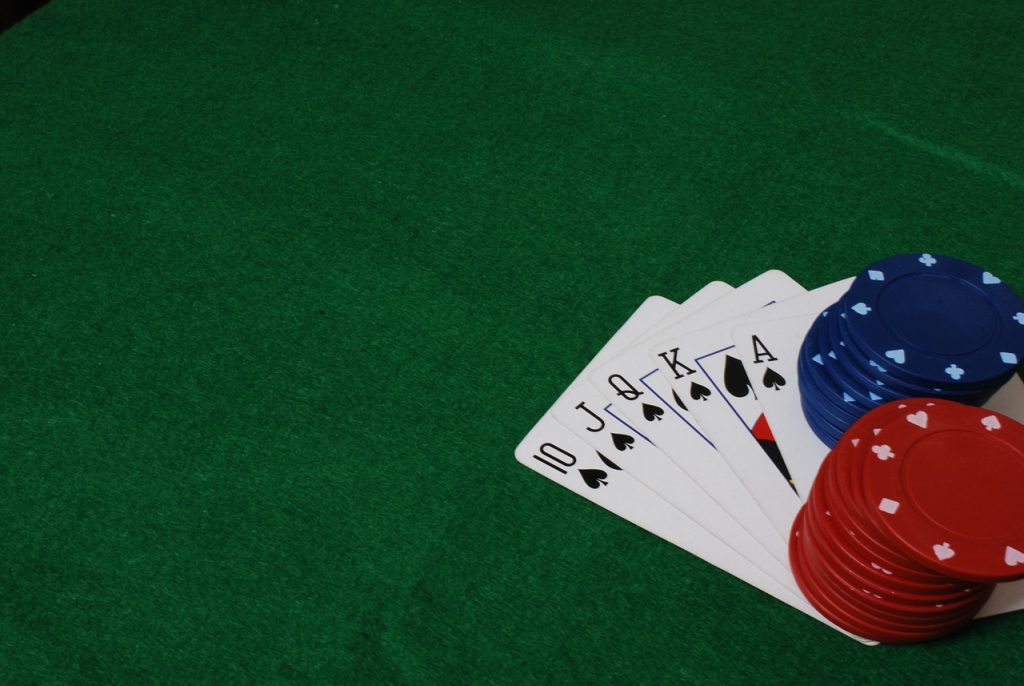
Photo by Pixabay
Choose your starting hands carefully
Before attempting poker limping correctly, one must understand which starting hands should be chosen. It will help you limit your losses if you play correctly after that. Starting hands for limping will differ from those you use when raising or re-raising, as fewer chips are at stake.
Experienced poker players tend to limp with hands such as suited connectors and mid-level pocket pairs. The key takeaway here is to stay active in your pre-flop play.
Instead, opt for a strategically sound approach. You can do it by choosing the right starting hands and gradually increasing the size of your pot to have a better chance of taking down your opponents’ poker chips.
Consider your position
Knowing when to “limp” in poker can be difficult, but considering your position can be a great start. Limping, or flat-calling the big blind pre-flop is a popular strategy for novice players. Proficient players understand that it’s not just about how high a hand is ranked but also where one sits at the table.
The position is integral when deciding whether to limp or raise pre-flop. Position affects the equity of hands and their playability post-flop. Limps can reap significant rewards if done correctly – otherwise, one may find themselves in less than desirable situations.
Considering your position before deciding to limp is essential to maximize your chances of coming away with a win.
Have patience
The best time to limp is when you sense that no one else in the game has raised or re-raised yet, and there is a good chance you can see the flop with it. It allows you to call less than the regular bet and still get cards to the board.

Photo by Pixabay
If someone at the table has already raised pre-flop, then limping doesn’t give you any advantage in terms of pot odds or implied odds. Try to avoid this if possible. Limping should never be used as a power play but rather as a discreet way to get more out of hand without committing too much money upfront.
Being aware of short-stacking
Poker limping requires a specific strategy, and being aware of short-stacking is key to doing it correctly. Because limping involves entering the pot with a much weaker starting hand than usual, short-stacking can be beneficial since it offers you some protection against your opponents.
Short-stacking limits the amount of money in play for each round. It makes bluffing more challenging and helps improve your game by allowing you to stay in hand longer.
Limping is often more profitable if done in position instead of out of position since you have greater control over the game’s outcome.
Effective short-stacking should always be front of mind when considering whether or not you should practice poker limping.
Play to win the pot
The casino guide says it best – to play poker limping correctly, it is essential to have a game plan in mind. Knowing how you want the hand to play out before it starts will help you stay on track and make decisions that align with your goals.
The key to successful poker limping is recognizing the type of board you are up against and determining pre-flop what future streets you would like to see. You can work backward and figure out if/when/where limping makes sense instead of more aggressive actions such as raising or folding.
Doing so enhances your chances of coming from each hand victorious, regardless of whether you choose to limp in.
Don’t be afraid to mix it up
Even experienced players tend to limp too much, but the truth is that limping should only sometimes be done the same way. Depending on the hand you hold and the situation at the poker table, you’ll consider if it could be an effective strategy.
If done correctly, lifting in a late position can often be a good play. If you’re in earlier positions with fewer players left to act behind you, it can become an invitation for others in the pot to take advantage of your willingness to invest.
Knowing when and where to repeat limp or three-bet should all also factor into your decision-making process.
Limp at the wrong times, and your stack will get crushed. Use it wisely when you play poker, and your profits can soar.

Photo by Pixabay
Play tight pre-flop
When limping is part of your plan, adhering to sound pre-flop principles and playing tight is essential. Doing so helps avoid costly mistakes when opponents decide to raise on the flop. You increase your chances of getting the necessary cards when you play tight.
Limping with speculative hands is only encouraged if you are certain that your opponents will pay to see the flop. If done right, limping can still be part of a winning strategy, so long as it is accompanied by sensible pre-flop play.
Play post-flop aggressively
The ability to successfully execute poker limping requires intense post-flop aggression. Limping is often a very loose play, and aggressive play on the flop is the preferred way to make up for that looseness.
It is especially true in low-stakes poker, where far fewer players try to out-think one another or use complex ranges or skill sets.
Aggressive post-flop play is essential to get maximum value from your pocket cards and take down pots with minimal effort. Aggression also gives you an edge since it allows you to pressure opponents who will then be forced to fold marginal hands. On the other hand, calling bets may cost them a larger pot.
Conclusion
Short-stacking should be considered when deciding whether or not to use this tactic, and an effective game plan should be formed before the hand is even started. It is also important to remember that tight pre-flop play should always accompany aggressive post-flop play to maximize profits. Doing so will maximize your chances of coming away with a winning hand and taking control of the result of your poker game.
The post Poker Limping: Doing it The Right Way appeared first on Championnat-De-Poker.
]]>The post Why You Should Start Playing Poker Online appeared first on Championnat-De-Poker.
]]>Poker has been around for centuries, but it has come a long way since its early days. It began as a game of chance and evolved into a strategic game of skill that requires cunning and knowledge. Not only has the range of stakes expanded from penny ante to high roller, the number of players allowed at one table increased significantly. The advent of technology has also revolutionized poker, ushering in online tournaments with thousands of participants, many competing for life-changing jackpots. In addition, poker’s global breakout boosted popularity with televised events featuring some of the best players in the world pitting their wits against each other. Lastly, technological advancements like hole card cameras and online poker have revolutionized the industry. Here are a few reasons you should begin your poker journey online.
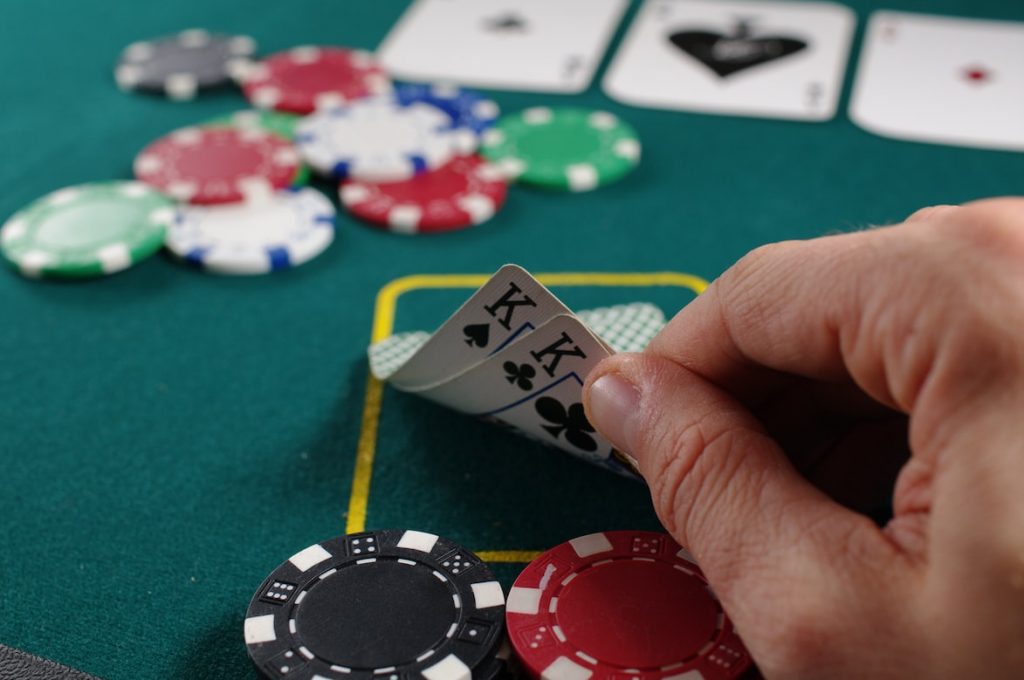
Online poker websites offer lucrative bonuses to entice and reward you for playing
For those looking to play poker for money, one of the top reasons to go online may be the opportunity to notch up some extra bonuses. Many online poker sites are incentive-based, offering bonuses for playing hands, reloading accounts, and entering special tournaments. These rewards stimulate players’ interest and keep poker enthusiasts coming back for more virtual card-tables fun. Whether your goal is to quickly add funds to your bankroll or just garner additional fulfillment from playing without an overarching challenge, poker sites have great support, like bonuses that give their enjoyers something extra.
Online poker is a much faster-paced game
When it comes to the thrills of playing poker, nothing quite compares to the speed and intensity of playing online. Unlike traditional poker games, where tables can take hours to finish a few hands, online poker is fast-paced, keeping players engaged while eliminating any part of the game that can feel tedious. Many online poker sites have convenient and easy-to-use features such as virtual chips, time limits per game, and organized tournaments, making the game more enjoyable and accessible. Additionally, since there are no physical opponents at an online table, it offers more opportunities for newcomers to engage in a comfortable and educational environment. With its quick pace and array of fun features, there’s no doubt why online poker stands out as one of the most significant forms of entertainment for lovers of card games.

Enjoy the comfort and convenience of playing poker online
Online poker has revolutionized the way people play their favorite games. This is especially true regarding convenience, as online players don’t need to leave their houses or even be pleasant to get lost in the thrill of a big tournament. At any point, whether in the day or night, finding a game that fits your financial plan and provides endless entertainment is effortless. Online poker also helps connect players worldwide, offering them rich experiences they wouldn’t otherwise find playing in a local casino. Many current stakes games were first created online and have not been available anywhere else until now. With graphically stunning interfaces and sophisticated Artificial Intelligence algorithms running the show, this is easily the most interactive version of poker on the market these days.
Online poker has a wide assortment of game types and formats
Online poker is the way to go if you want a game that offers more variety than traditional poker. With online options, you can choose from a more comprehensive selection of games than ever before. Whether it’s Texas Holdem, Pot Limit Omaha, Short Deck, or other forms of community and private poker, there is something for everyone. There’s no limit to the number of skills one can hone with the different variations of poker that are available in this format. If a specific game doesn’t suit you, you can simply switch to another one until something better comes. Since online poker happens fast and has a much shorter playthrough time than offline poker, it’s excellent for those who don’t want to lose hours of their day playing too many hands or otherwise fighting for literally nothing. Therefore, if you want access to more games and additional features and rewards from being connected to an online platform, online poker is undoubtedly your best bet!
Play online poker, and multitask
Online poker games are a favorite of many because you can do other things while playing. This is an attractive feature for poker players and those seeking entertainment, whether it’s watching TV, talking with friends, or surfing the Internet. You can get in on poker even if your schedule doesn’t allow you to dedicate hours. Online poker games are very convenient in that aspect. Their ease and convenience have made them one of the most popular poker forms today, and they are often more affordable than poker played in person. Whether you’re looking for a way to pass the time or make some extra cash, online poker offers increased accessibility and opportunities.
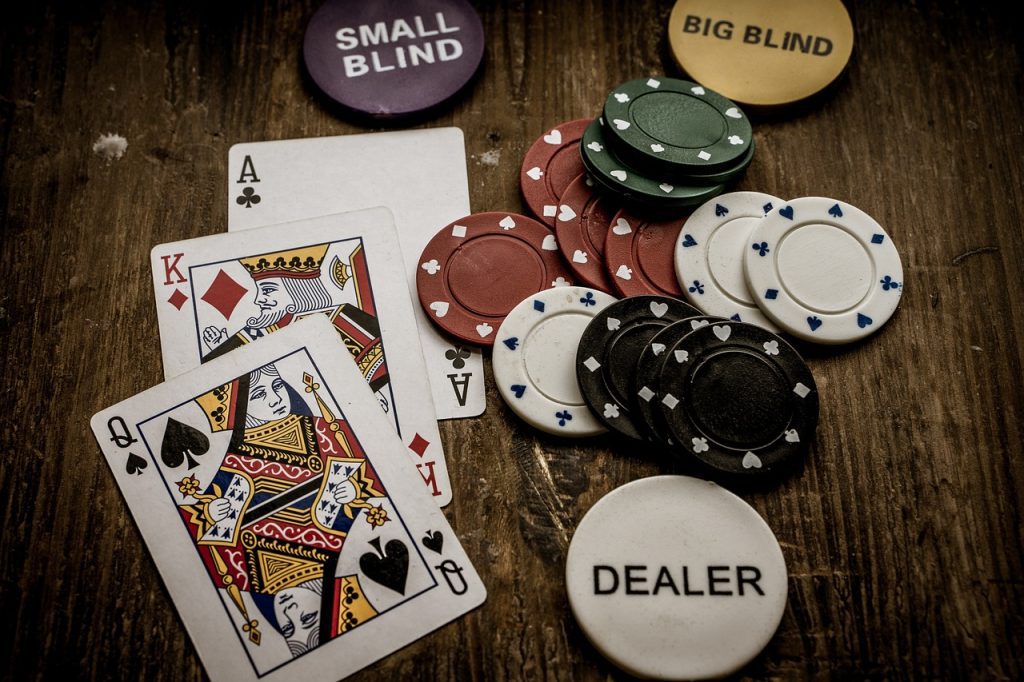
Try online poker today!
Now that you know some reasons why people enjoy playing online poker, maybe it’s time to try it. After all, nothing stops you from choosing a site from the myriad of options and giving it a go. Who knows, you might find yourself enjoying it more than you thought. The best way to find out is by giving it a shot and reading the poker guide. So what are you waiting for? Grab a seat at a reputable virtual table and see what all the fuss is about.
The post Why You Should Start Playing Poker Online appeared first on Championnat-De-Poker.
]]>The post Texas Holdem for Beginners: The Two Passive Styles appeared first on Championnat-De-Poker.
]]>Poker is often seen as a game of luck, but the truth is that it takes a great deal of skill to be successful. You can employ countless strategies and techniques, with none being the best in every situation. While this strategic depth may intimidate beginners, there’s an abundance of resources online to help you learn the game. This poker guide is one of them, and it will teach you one of the most fundamental unwritten rules of poker: Being aggressive. It will cover the two main passive playstyles and explain their main flaws.

Poker playstyles: Tight and loose, passive and aggressive
In poker, “tight” and “loose” refer to the number of hands a person plays. A tight player plays few hands, sticking to premium ones like AA and AK. A loose player plays a lot of hands and is more willing to play ones without guaranteed value. Passive and aggressive describe how a person plays their hands. Passive players prefer to check and call, while aggressive players are not afraid to bet and raise. The four main poker playstyles are created from combinations of tight/loose and passive/aggressive. They are tight-passive, loose-passive, tight-aggressive, and loose-aggressive.
Tight-passive: An overview
In poker, the tight-passive playstyle is characterized by its cautious approach. Players who adopt this style typically only play a small number of hands and are quick to fold if they do not have a strong hand. They also tend to check or call rather than bet or raise, which keeps the pot size small. Many beginners resort to this style because they fear confrontation, which brings problems. Tight-passive players often get nicknamed rocks because of their rigid playstyle of doing nothing until they get a solid hand.
Loose-passive: An overview
The loose-passive playstyle in poker is characterized by a low frequency of betting and raising combined with a high frequency of calling. While they play many hands, they are unwilling to try and bluff, instead calling even when the odds of their hand improving are terrible. Many beginners also adopt this playstyle, as they feel that betting could be a waste of money but still want to continue with their hands. Loose-passive players are often nicknamed calling stations because of said overreliance on calling.
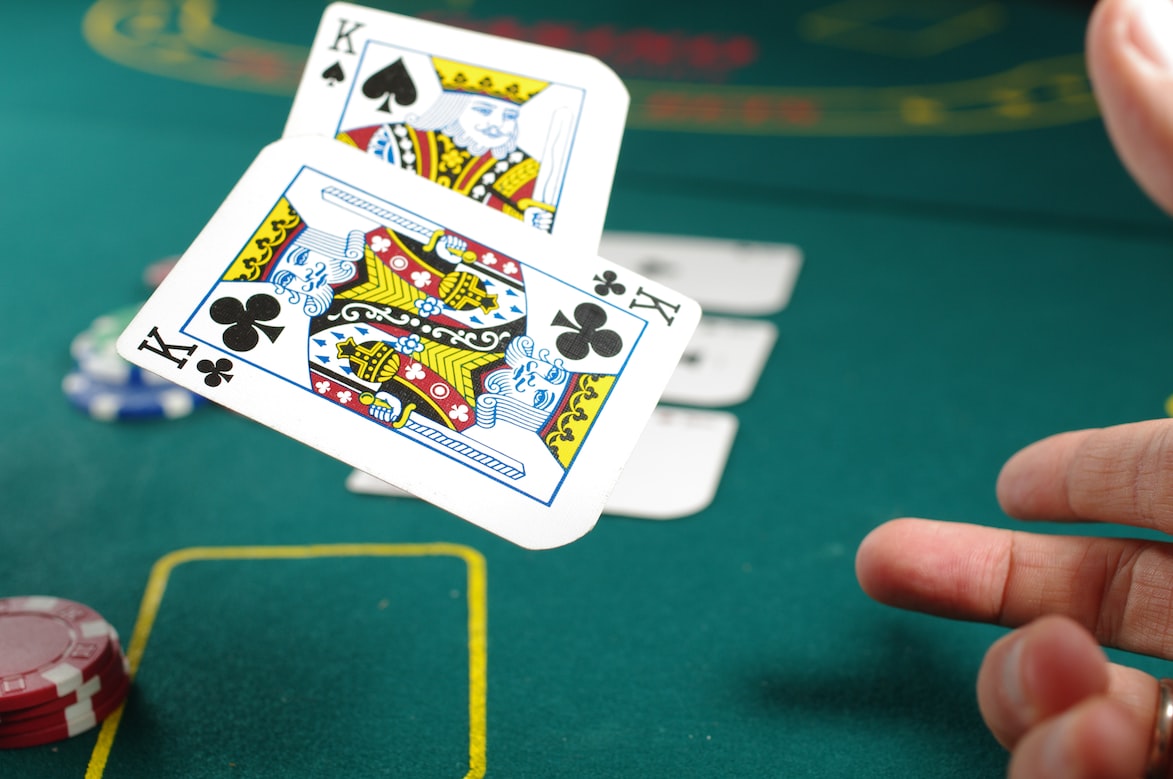
Tight-passive flaws
Any experienced poker player knows that the tight-passive playstyle has its flaws. First, players who adopt this strategy can be easily bluffed. Their starting hand selection means skilled players will. Second, their predictable nature makes it easy for opponents to deny them profit. Players effectively telegraph their hands to their opponents by playing tightly and passively. As a result, skilled opponents can easily exploit their weaknesses and take their chips. Finally, the nature of the tight-passive playstyle means that players aren’t maximizing their potential profits. While the tight-passive playstyle sounds decent on paper, its predictable nature makes it difficult for players to win big pots.
Loose-passive flaws
While the loose-passive playstyle can sometimes work in very low-stakes games, it is generally a significant mistake in anything more serious. The reason for this is that the blinds eaten up by playing so many hands quickly add up, and unless you are constantly winning big pots, it is challenging to make up for these losses. Furthermore, by playing so many hands, you are likely to run into situations where you are outmatched by players who are more aggressive or who simply have better cards. As a result, if you want to be successful in poker, adopting a more tight-aggressive or loose-aggressive approach is essential.
Why is being passive bad?
As you may have noticed, both the tight and loose-passive playstyles have many flaws. Being passive in poker is generally a bad idea for several reasons. For one, it can lead to missed opportunities. If you’re not actively betting or raising, you’re not giving yourself a chance to win pots without a good hand. Being passive can also make you an easy target for more aggressive players. If you’re not putting any pressure on your opponents, they can easily outplay you by betting and raising when they have strong hands and taking down pots that you could have won. Finally, passive play can simply be boring. Poker is supposed to be a fun and exciting game, but it might not be enjoyable if you’re just calling and checking all the time. So if you want to be a successful poker player, you must be willing to take risks and be more aggressive. Otherwise, you’ll likely find yourself stuck in the middle of the pack with little chance of winning.

Where to play online poker
We hope this article taught you about one of the most critical unwritten {{Texas Holdem rules}}: You must be aggressive. The next time you sit down at the table, keep these tips in mind and sign up for an account at GGPoker, the world’s largest poker room. With a wide variety of poker games and formats, you will surely find plenty of competition (and fun) at GGPoker.
The post Texas Holdem for Beginners: The Two Passive Styles appeared first on Championnat-De-Poker.
]]>The post Poker Strategy: How to Beat Limpers (And When to Limp) appeared first on Championnat-De-Poker.
]]>While poker is easy to learn, it can be hard to master, especially Texas Holdem. The game’s near-endless strategic depth is one of the main reasons for this. Players must constantly adjust to the game’s ever-changing dynamics, like opponent playstyles and board state. One can employ numerous techniques and strategies, with no particular best playstyle in every situation. That strategic depth means beginners will often make obvious mistakes, which you can use to your advantage. This poker guide will cover one such mistake, which is limping pre-flop. It will explain everything from why it’s a mistake to when you should consider it.
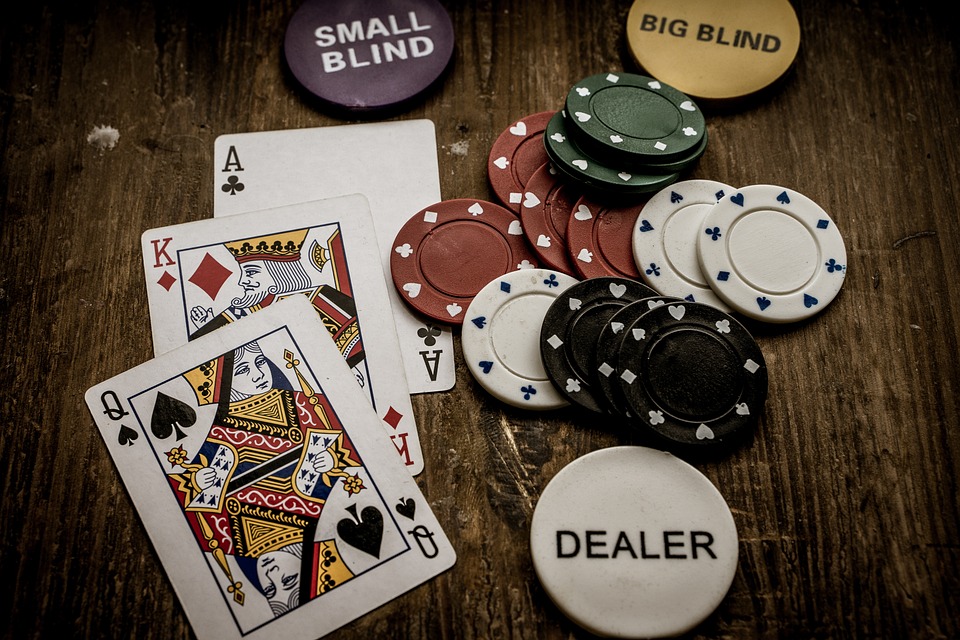
What is limping?
In Texas Holdem, limping is the act of calling the big blind instead of raising or folding. In most cases, limping is a weak play that indicates a player who is either new to the game or doesn’t have a strong hand. The two forms of limping are open-limping and over-limping. Open-limping occurs when the first player to act calls the big blind. Over-limping occurs when a player calls the big blind after one or more other players have also called it. Open-limping is the more significant mistake of the two, as over-limping can allow you to see a cheap flop and is an informed decision, while open-limping is blind and accomplishes nothing.
Why is limping bad?
Limping in poker is generally considered to be a bad idea. There are a few reasons for this. First, limping gives your opponents more information about your hand. If you raise, they may get scared and fold, but if you just limp, they know that you likely have a weak hand. Second, limping means you are investing less money in the pot, which means you will win less if you have a good hand. Finally, limping does not give you any information or chance to win the pot outright. A raise gives you information based on how your opponents respond to the bet, and if they all fold, you win the pot. Limping doesn’t do this; it is essentially just throwing money away since you rarely see the flop cheaply with a limp. So overall, it’s usually better to raise or fold pre-flop than to limp.

Beating limpers: The tight way
In a more experienced play, you would often want to play tighter against limpers. That is because players at that level understand limping and usually do it with a hand strong enough to play from an early position. They would also usually limp if the players after them 3-bet frequently, so the limp controls the size of the pot and prevents it from getting out of hand. Against players like these, you should probably stick to your best hands and respect them when they limp.
Beating limpers: The loose way
Most beginners, however, do not understand limping at all. They will limp with terrible hands, and the best way to beat these players is by playing much looser. These players are passive and likely do not grasp the game well, so they would seldom punish you by 3-betting. They’re likely to be loose-passive players, and you can use this to your advantage. Don’t try to bluff them; instead, utilize their overreliance on calling. You can use them for great value whenever you have a made hand, and you can afford to play even weaker hands because of their loose range.
When to limp
Limping, while often a suboptimal play, has its niche uses. More specifically, over-limping is an excellent option when facing multiple limpers with a drawing hand. You can use their open limps to your advantage and attempt to see a cheap flop. Outside of over-limping, one of the only scenarios you would want to open-limp is when the players after you 3-bet often. Even when this is the case, you want to limp with a balanced range of bluffs and value hands. Finally, limping is also better from the blinds than any other position. You have better odds of calling from the blinds since you already have money in the pot, though you should still avoid playing too many hands from the blinds due to their positional disadvantage.

Where to practice poker
Limping is a common beginner mistake, and now you know exactly how to exploit that. We hope this article taught you how to play Texas Holdem better. If you want to practice your skills, sign up at GGPoker, the world’s largest poker room. With countless poker games, you can guarantee you’ll find one that suits you.
The post Poker Strategy: How to Beat Limpers (And When to Limp) appeared first on Championnat-De-Poker.
]]>The post Common Pre-Flop Mistakes Everyone Makes appeared first on Championnat-De-Poker.
]]>Although some see poker as a game of chance, a great deal of skill is involved. Successful players need to be able to read their opponents, make quick decisions, and stay calm under pressure. While there are many ways to play and improve at the game, one of the best is focusing on your mistakes. Identifying and correcting your mistakes is key to improving as a poker player. This poker guide will help with that by providing a list of the most common mistakes poker players make pre-flop, along with why these mistakes are bad.

Pre-flop limping
Pre-flop limping (or just “limping”) is when a player calls the big blind instead of raising when they first come into a hand. It’s generally considered to be a weak play for a few reasons. First, it gives your opponents information about your hand – if you would have raised with a strong hand, they know they can safely fold their marginal hands. Second, it builds a bigger pot when you might not have the best hand. If you’re the only one limping, you’re essentially giving free money to the raise-first player. Finally, it makes it more likely that you’ll see a flop with many other players, which increases the chances that someone will hit something and beat you. So if you’re thinking about limping pre-flop, think again – it’s one of the biggest mistakes you can make in poker.
Not 3-betting enough
A 3-bet is when you raise after someone has already raised. It’s generally done for value, to protect your hand, or as a bluff. Many players don’t 3-bet enough, especially in today’s games where the pre-flop raising ranges are widening. By not 3-betting enough, you’re missing out on value and giving your opponents too good of odds to see a flop. You should be 3-betting a wider range of hands from the late position and taking a more aggressive approach overall. If you’re unsure how to approach 3-betting, start with a smaller size and see how your opponents react. If they fold too often, you can start increasing your bet size. If they call or 4-bet too often, you may need to adjust your range. But generally, don’t be afraid to get aggressive preflop and 3-bet more often.

Overlooking position
Ignoring position is one of the biggest mistakes you can make in poker, especially pre-flop. Position refers to where you sit at the table and the order in which players act. The last player to act has an advantage because they have the most information. The earlier you act in a hand, the less information you have. The player on the button knows how everyone else has acted and can make a more informed decision. They can also use this information more effectively by bluffing or value betting. The player on the button also has the advantage of seeing how everyone plays their hand out before making a decision. This means they can make better decisions about when to fold, call, or raise. If you’re not paying attention to position, you’re at a considerable disadvantage and are more likely to make mistakes that cost you money.
Playing too tight from the blinds
When it comes to poker, the blinds are generally considered the worst position to be in. This is because you’re forced to bet before seeing any other player’s cards, and you must first act pre-flop. This puts you at a considerable disadvantage, as you don’t have any information on which to base your decisions. However, there is one silver lining – you get better odds of calling from the blinds. Your forced bet means you have to call a smaller amount than usual. So, while you shouldn’t overplay your poker hands from the blinds, you should try to defend them more often.

Where to practice poker
Poker is a game that takes practice and experience. The pre-flop is the most critical phase of the game, so you must make sure your strategy is solid. While no one can guarantee you’ll never make another mistake, arming yourself with the knowledge of these most common pre-flop mistakes will give you a better chance of avoiding them. So, what are you waiting for? Learn how to play poker like a pro by signing up today with GGPoker, the world’s largest poker room. With world-class software and support, you’ll be able to hone your game until you’re beating the best in no time.
The post Common Pre-Flop Mistakes Everyone Makes appeared first on Championnat-De-Poker.
]]>The post Poker Strategy: The Art of The Semi-Bluff appeared first on Championnat-De-Poker.
]]>A big reason why poker is this popular is its skill requirement. The basic rules of poker are simple, meaning it is easy for beginners to start playing. However, poker also has near-limitless strategic depth, as there is always something new to learn. Beginners may be intimidated by all the terms and techniques they must remember, but thankfully, there are tons of resources to help you improve. This poker guide is one of them and focuses on a vital technique for aggressive players: The semi-bluff. It will explain what it is, how to use it, and why you should use it.

What is a semi-bluff?
A semi-bluff is a bluff made with a drawing hand. It uses two core concepts of poker math: Pot equity and fold equity. Pot equity is the chance of your hand being the strongest at a certain point, while fold equity is the chance that your opponent folds to a bet you make. The semi-bluff is great because it combines the two to give you two ways to win the pot. Like a standard bluff, your opponent may fold, which wins you the pot outright. Unlike a regular bluff, if the opponent calls, you still have a chance of hitting your draw, allowing you to win a large pot at the showdown.
Advantages of semi-bluffs
Semi-bluffs have a few advantages that make them better than regular bluffs:

What hands to semi-bluff
Hand selection is critical when semi-bluffing, as a hand without enough equity is just a regular bluff without a high chance of success. Your hand needs to meet specific criteria to become a good semi-bluff. It must not be strong currently, but it should also have the potential to improve and not have direct showdown value. Suppose you have a showdown value in the form of pocket pairs. In that case, checking is usually better because you want the opportunity to see the following cards without committing too much money. If you are confident you have the best hand, you should instead be value betting.
With those selection criteria in mind, here are some hands you should consider semi-bluffing with:
These hands have enough equity to have a decent chance against solid pairs. You should avoid hands that do not have enough equity to do that, like:
How to semi-bluff better
Semi-bluffs are great, but they can sometimes be tricky to pull off if you do not understand your pot or fold equity. Here are a few tips to improve your semi-bluffing success:

Practicing semi-bluffs
We hope this article taught you how to play poker by semi-bluffing well. If you want to try them in real games, visit sites like GGPoker, the world’s largest poker room. Online sites have benefits over casinos, like being easier to access and faster-paced. They even allow you to use poker tracking software to analyze your play style and find weaknesses.
The post Poker Strategy: The Art of The Semi-Bluff appeared first on Championnat-De-Poker.
]]>